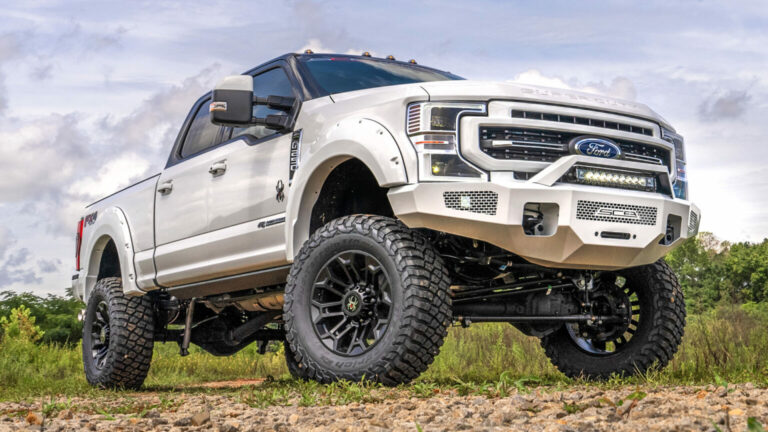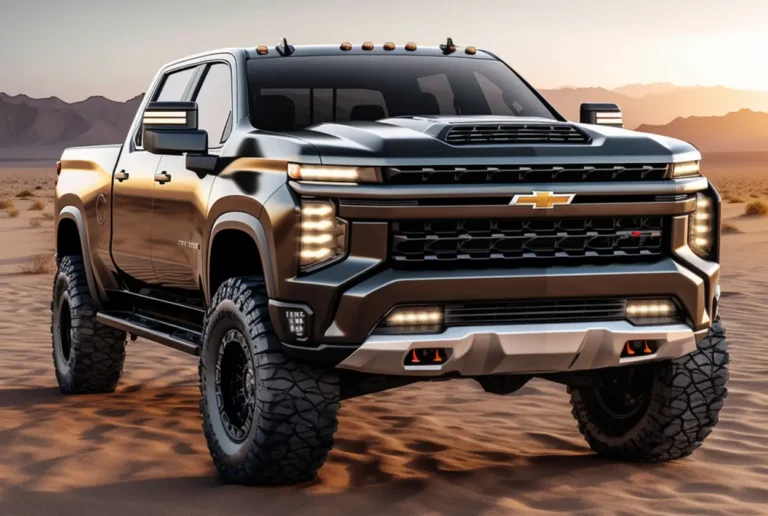1990s Dodge Trucks For Sale: Your Comprehensive Guide to an Enduring Icon
1990s Dodge Trucks For Sale: Your Comprehensive Guide to an Enduring Icon cars.truckstrend.com
The 1990s was a transformative decade for pickup trucks, and perhaps no vehicle epitomized this shift more dramatically than the Dodge Ram. Launched in 1994, the second-generation Ram shattered conventional truck design, introducing a bold, "big-rig" styling that instantly made its competitors look dated. More than just a pretty face, these trucks offered a potent combination of robust engineering, practical utility, and, for many, the legendary Cummins turbodiesel engine. Today, decades later, 1990s Dodge trucks remain highly sought after, whether for their workhorse capabilities, their distinct aesthetic, or their growing status as a modern classic.
This comprehensive guide will delve into the world of 1990s Dodge trucks for sale, providing essential information for anyone considering purchasing one of these iconic vehicles. From understanding their various configurations and common issues to navigating the current market, we’ll equip you with the knowledge to make an informed decision and find the perfect vintage Ram for your needs.
1990s Dodge Trucks For Sale: Your Comprehensive Guide to an Enduring Icon
The Rise of an Icon: Why 1990s Dodge Trucks Still Command Attention
Before 1994, Dodge trucks, while capable, often lagged behind Ford and Chevrolet in sales and public perception. That all changed with the introduction of the redesigned Ram. Its muscular, imposing front end, with a massive grille and bulging fenders, was unlike anything else on the road. This audacious styling, primarily credited to designer Phillip E. Payne, didn’t just turn heads; it redefined what a pickup truck could look like, inspiring a generation of designers and firmly establishing Dodge as a major player in the truck market.
Beyond aesthetics, the 90s Rams were built to work. They offered a range of powerful engines, comfortable interiors (for the time), and a reputation for durability, especially when equipped with the Cummins 5.9L diesel engine. This combination of groundbreaking design and proven performance has cemented their place in automotive history, making them a popular choice for enthusiasts, farmers, contractors, and anyone who appreciates a truck with genuine character and capability.
Key Models and Engine Options to Consider
The 1990s Dodge Ram series included the light-duty 1500, the three-quarter-ton 2500, and the heavy-duty one-ton 3500 (often with dual rear wheels, or "dually"). Each model offered various cab configurations (Regular Cab, Club Cab, and later, the Quad Cab) and bed lengths (short and long). The choice often comes down to intended use, but the engine is arguably the most critical decision for potential buyers.
Gasoline Engines:
- 3.9L V6 (Magnum): Found primarily in 1500 models, offering adequate power for light duty but often underpowered for anything serious.
- 5.2L V8 (318 Magnum): A solid, reliable engine for 1500 and some 2500 models. Good all-around performer, known for longevity if maintained.
- 5.9L V8 (360 Magnum): The most powerful gas V8, standard in many 2500/3500s. Offers good torque and horsepower, but can be thirstier.
- 8.0L V10 (Magnum): A beast of an engine, mostly found in heavy-duty 2500/3500s for serious towing. Offers immense power but very poor fuel economy.

Cummins Diesel Engines (5.9L Inline-6):

The crown jewel for many, the Cummins diesel offers unparalleled torque, legendary durability, and impressive fuel efficiency for a truck of its size.
- 12-Valve (1994-1998.5): Known for its mechanical simplicity and robust nature. These engines are highly tunable and often regarded as the most reliable. They are entirely mechanical, making them easier to work on for some.
- 24-Valve (1998.5-2002): Introduced electronic controls for emissions and power improvements. While still incredibly capable, they are known for potential issues with the VP44 injection pump and lift pump, which are more costly to repair than the 12-valve’s P7100 pump.

Both diesel options are highly desirable, but the 12-valve often commands a premium due to its legendary reliability and ease of modification.
What to Look For When Buying: A Pre-Purchase Checklist
Buying a used truck from the 90s requires diligence. These vehicles are old, and even the best-maintained examples will have wear and tear. A thorough inspection is crucial.
- Rust: Common areas include rocker panels, cab corners, wheel wells, bed sides, and the frame. Pay close attention to the frame rails, especially around the suspension mounts and where the bed meets the cab.
- Body and Paint: Check for accident damage, mismatched paint, dents, and clear coat failure. The iconic Ram grille and bumper are prone to damage.
- Engine:
- Gasoline: Listen for knocks, ticks, or unusual noises. Check for oil leaks (especially from the plenum gasket under the intake manifold, a common issue), and exhaust manifold leaks (ticking sound when cold).
- Cummins Diesel: Look for excessive black or blue smoke. Check for oil leaks (especially the "Killer Dowel Pin" cover on 12-valves), fuel leaks, and listen for unusual knocking. Ensure the truck starts easily, hot or cold.
- Transmission: Test drive thoroughly. Automatic transmissions (46RE, 47RE, 48RE) should shift smoothly without flaring or harshness. Check fluid condition (should be red, not brown or burnt-smelling). Manual transmissions (NV4500, NV5600) should shift cleanly; check for clutch slip and grinding.
- Suspension and Steering: Test for excessive play in the steering wheel (common due to worn steering boxes and linkage). Listen for clunks or squeaks over bumps, indicating worn ball joints, tie rods, or bushings. Check shock absorber condition.
- Interior: Dash cracks are almost universal in these trucks, especially the 1994-1997 models. Check seat condition, headliner, and ensure all electrical components (windows, locks, radio, HVAC) work.
- Drivetrain (4×4 models): Engage 4WD (high and low range) to ensure it works properly. Listen for grinding or clunking from the transfer case or differentials.
- Tires and Brakes: Inspect tire tread depth and condition. Check for uneven wear. Test brake pedal feel and stopping power.
- Documentation: Always ask for service records. A well-documented history is a strong indicator of a cared-for vehicle.
Common Issues and Solutions
Knowing the common weak points of 90s Rams can save you headaches and money down the road.
- Dash Cracks: As mentioned, almost all 2nd-gen Rams suffer from this. Solutions range from dash covers to full replacement dashboards (though these can be pricey).
- Plenum Gasket (Gas Engines): The gasket under the intake manifold can fail, causing oil consumption and a loss of power. It’s a well-known issue with affordable aftermarket fixes.
- Steering Play/Wander: Worn steering boxes, ball joints, and tie rods contribute to loose steering. Upgraded steering components and heavier-duty steering boxes are available.
- Automatic Transmission Issues (especially 47RH/RE behind Cummins): The stock automatics, particularly behind the high-torque Cummins, can be prone to failure, especially if the truck has been worked hard or modified. Many owners opt for upgraded aftermarket transmissions or manual swaps.
- Cummins Specific Issues:
- Killer Dowel Pin (KDP) – 12-Valve: A small steel dowel pin that can back out and fall into the timing gears, causing catastrophic engine damage. It’s a relatively inexpensive preventative fix.
- "53 Block" – 24-Valve (late 98-01): Certain engine blocks (identified by a "53" cast into the block) were prone to cracking in high-stress areas, particularly when subjected to heavy loads or modifications. Not all "53 blocks" crack, but it’s a known risk.
- VP44 Injection Pump (24-Valve): These electronic pumps are known for failure, often due to a failing lift pump (which supplies fuel to the VP44). Keeping the lift pump healthy is crucial. Upgraded lift pumps are highly recommended.
Understanding Trim Levels and Features
90s Rams came in various trim levels, influencing their features and price.
- ST (Base Model): Typically had manual windows/locks, vinyl seats, and minimal features.
- SLT: Added power windows/locks, cloth seats, air conditioning, and more creature comforts.
- Laramie SLT: The top-tier trim, offering premium cloth or leather, woodgrain trim, upgraded sound systems, and more options.
- Sport: A more aggressive appearance package with body-colored bumpers, grilles, and sometimes unique wheels.
Cab configurations included the Regular Cab (two doors), Club Cab (extended cab with small rear jump seats), and later, the Quad Cab (four full-sized doors, starting in 1998, though technically late 90s).
The Market Today: Pricing and Availability
The market for 1990s Dodge trucks is vibrant but highly variable. Prices are influenced by:
- Condition: A pristine, low-mileage example will fetch a significant premium.
- Engine: Cummins diesel trucks, especially 12-valves, are consistently more expensive than gas models.
- Drivetrain: 4×4 models generally command higher prices than 2WD.
- Mileage: Lower mileage usually means higher prices, but service history is equally important.
- Trim Level & Options: Higher trims and desirable options (e.g., manual transmission with Cummins) can increase value.
- Location: Prices can vary regionally based on demand and climate (less rust in dry climates).
You can find these trucks on popular online marketplaces (Facebook Marketplace, Craigslist, eBay Motors), dedicated classic car/truck websites (AutoTrader Classic, Bring a Trailer), and sometimes at local used car dealerships or specialized truck sellers. Be prepared to travel for the right truck.
Owning and Maintaining a 90s Dodge Truck
Owning a 90s Dodge Ram is a rewarding experience, but it requires a commitment to maintenance. Parts availability is generally good, with a strong aftermarket for common wear items and upgrades. A robust online community of enthusiasts provides a wealth of knowledge, troubleshooting tips, and support. Many common repairs can be tackled by a competent DIY mechanic, while more complex issues (like transmission rebuilds or serious engine work) may require professional help. These trucks are often modifiable, allowing owners to customize them for specific purposes, from off-roading to heavy towing.
Estimated Price Table for 1990s Dodge Trucks (For Sale)
Please Note: These prices are estimates and can vary wildly based on the specific year, mileage, condition, modifications, region, and seller. Always inspect the vehicle thoroughly and consider a pre-purchase inspection.
| Model (Year Range) | Engine Type | Condition (Fair) | Condition (Good) | Condition (Excellent/Collector) |
|---|---|---|---|---|
| Ram 1500 | 3.9L V6 | $2,000 – $4,000 | $4,000 – $7,000 | $7,000 – $10,000+ |
| (1994-2001) | 5.2L V8 | $2,500 – $5,000 | $5,000 – $8,500 | $8,500 – $12,000+ |
| 5.9L V8 | $3,000 – $6,000 | $6,000 – $10,000 | $10,000 – $15,000+ | |
| Ram 2500 | 5.9L V8 | $3,500 – $7,000 | $7,000 – $12,000 | $12,000 – $18,000+ |
| (1994-2002) | 8.0L V10 | $4,000 – $8,000 | $8,000 – $14,000 | $14,000 – $20,000+ |
| 5.9L Cummins | $8,000 – $15,000 | $15,000 – $25,000 | $25,000 – $40,000+ | |
| Ram 3500 | 5.9L V8 | $4,000 – $7,500 | $7,500 – $13,000 | $13,000 – $18,000+ |
| (1994-2002) | 8.0L V10 | $4,500 – $8,500 | $8,500 – $15,000 | $15,000 – $22,000+ |
| 5.9L Cummins | $9,000 – $18,000 | $18,000 – $30,000 | $30,000 – $50,000+ |
Note: "Fair" condition implies needing significant repairs or cosmetic work. "Good" implies a solid, running truck with minor issues. "Excellent/Collector" implies a well-maintained, low-mileage, near-original or professionally restored vehicle.
Frequently Asked Questions (FAQ)
Q: Are 1990s Dodge trucks reliable?
A: Generally, yes, especially the Cummins diesel models. Gas engines are also robust. Like any vehicle of their age, reliability depends heavily on past maintenance and how well the truck was cared for. Expect to address common wear items and known issues.
Q: Which engine is best for a 1990s Dodge Ram?
A: For heavy towing, longevity, and fuel economy, the 5.9L Cummins turbodiesel is the clear winner. Between the 12-valve and 24-valve, the 12-valve (pre-1998.5) is often considered more mechanically robust and simpler to maintain, though the 24-valve offers more stock power. For a gas engine, the 5.9L (360) V8 offers the best balance of power and reliability for most users.
Q: What’s the difference between 12-valve and 24-valve Cummins?
A: The 12-valve (1994-1998.5) is mechanically injected with 12 valves (2 per cylinder). It’s known for its simplicity and ruggedness. The 24-valve (1998.5-2002) introduced electronic controls for fuel injection and has 24 valves (4 per cylinder), offering more horsepower and torque from the factory. The 24-valve is also known for potential issues with its electronic VP44 injection pump.
Q: Are parts hard to find for these trucks?
A: For most common components, no. The popularity of these trucks means a healthy aftermarket and readily available OEM parts for many items. Specialty parts for rare trims or very specific issues might require more searching, but overall, parts availability is good.
Q: Can a 1990s Dodge Ram be a daily driver?
A: Absolutely. Many people still use these trucks as daily drivers. They offer a comfortable ride (for a truck), good visibility, and plenty of utility. However, factor in potentially lower fuel economy (especially with gas V8s/V10s) and the need for regular maintenance common with older vehicles.
Q: What is the "53 block" issue?
A: The "53 block" refers to a specific casting number found on the engine block of some 24-valve Cummins diesels (late 1998-2001). These blocks had thinner casting walls in certain areas and were prone to cracking, especially under heavy load or when modified for higher power. While not all 53 blocks crack, it’s a known vulnerability.
Q: Is the Killer Dowel Pin (KDP) a guaranteed problem?
A: No, it’s not guaranteed, but it’s a significant enough risk to warrant attention for 12-valve Cummins owners. The dowel pin holds the timing gear housing to the block; if it falls out, it can cause catastrophic damage. There’s a simple, inexpensive preventative fix available that should be performed if it hasn’t been already.
Conclusion
The 1990s Dodge Ram trucks hold a unique place in automotive history. Their groundbreaking design, combined with a range of capable engines (most notably the legendary Cummins diesel), forged a reputation for rugged utility and distinctive style. For those seeking a workhorse, a restoration project, or simply a classic truck with undeniable presence, a 90s Ram offers compelling value.
While they come with their share of common issues typical of vehicles of their age, diligent research, a thorough pre-purchase inspection, and a commitment to ongoing maintenance can lead to years of reliable service and enjoyment. Stepping into a 1990s Dodge Ram isn’t just buying a used truck; it’s investing in a piece of American automotive heritage, a vehicle that continues to turn heads and prove its mettle decades after its debut.






